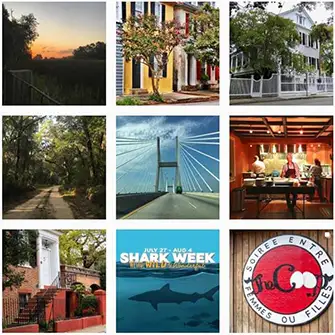
The Pros and Cons of Moving to Charleston’s Historic District
Charleston, South Carolina, is rich in history, culture, and Southern charm. Its Historic District is particularly revered, drawing people from all over the world captivated by its cobblestone streets, antebellum architecture, and vibrant community life. However, like any decision, moving to Charleston’s Historic District comes with both advantages and challenges. This article explores the pros and cons of making this historic area your new home.
A Walk Through History: Moving to Charleston’s Historic District
Living in Charleston’s Historic District is like stepping back in time. The area is a living museum with well-preserved buildings that date back to the 18th and 19th centuries. Each corner of the district tells a story, from the grandeur of the antebellum mansions to the quaintness of the single-house styles. For history enthusiasts, the district offers an unparalleled opportunity to immerse oneself in the past daily.
The Architectural Beauty That Defines the District
The architecture in Charleston’s Historic District is one of its biggest draws. Homes are adorned with intricate ironwork, sprawling piazzas, and lush gardens. The charm of these historic homes is undeniable, and many residents take pride in maintaining the aesthetic integrity of their properties. However, living in such homes can also mean dealing with the challenges of aging structures, including the need for frequent maintenance and repairs.
A Strong Sense of Community and Tradition
One of the greatest benefits of moving to Charleston’s Historic District is the strong sense of community. Residents are often deeply connected to the area’s traditions and take part in various cultural events and festivals. This sense of belonging and shared history can make the district feel like a tight-knit neighborhood where people know each other and take pride in their collective heritage.
The Cost of Living: Is It Worth the Price?
While the charm of the Historic District is undeniable, it comes with a price. The cost of living in this area is significantly higher than in other parts of Charleston. Real estate prices are steep, particularly for those who want to live in one of the district’s coveted historic homes. Property taxes and the cost of maintaining an older home can add up quickly. Prospective residents must weigh the financial commitment against the benefits of living in such a unique environment. If you are moving, for example, from Florida to South Carolina, you will have to arrange a safe interstate move, which should also be included when budgeting for your move.
A calculator, notepad, and dollar bills on a white surface.
Limited Modern Conveniences in a Historic Setting
Living in Charleston’s Historic District means embracing the charm of the past and accepting some limitations. Modern conveniences can be harder to come by in a district where preservation is a priority. For example, parking can be a challenge, as many homes were built before the advent of the automobile. On top of that, there may be restrictions on renovations and modifications to maintain the historical integrity of the area.
The Joys of Walkability and Proximity to Amenities
One of the significant advantages of living in Charleston’s Historic District is its walkability. Residents can stroll to nearby shops, restaurants, and cultural attractions, enjoying the area's vibrant street life. This convenience is a major draw for those who prefer to leave their cars behind and embrace a pedestrian-friendly lifestyle. The district’s proximity to downtown Charleston also means easy access to various amenities and entertainment options.
Balancing Tourism and Residential Life
Tourism is a double-edged sword in Charleston’s Historic District. On the one hand, the influx of visitors helps sustain local businesses and keeps the area lively. On the other hand, the constant presence of tourists can sometimes disrupt the tranquility of residential life. Crowded streets, noise, and the occasional inconvenience of living in a tourist hotspot are factors potential residents should consider.
The Appeal of Southern Hospitality
Charleston is known for its Southern hospitality, and this extends to its Historic District. The friendliness and warmth of the locals can make newcomers feel welcome and at home. Whether it’s a friendly chat with neighbors or a warm greeting from shopkeepers, the sense of community and hospitality is a major plus for those moving to the area.
The Impact of Weather and Natural Events
Living in Charleston’s Historic District also means being prepared for the weather. That's why Big Man's Moving Company advises always hiring professionals with experience moving to certain climates. Charleston, specifically, experiences a humid subtropical climate, which can be hot and humid in the summer. It is also susceptible to hurricanes and flooding, posing risks to historic homes. Therefore, its residents must be proactive in securing their properties and have plans for potential natural disasters.
Lightning and a tornado hit the village.
The Cultural Enrichment of Charleston’s Historic District
Living in the Historic District means being surrounded by culture. The area is home to numerous art galleries, museums, and theaters, offering residents endless opportunities to engage with the arts. Whether attending a performance at the Dock Street Theatre or exploring the exhibits at the Gibbes Museum of Art, the district’s cultural offerings are a significant draw for those who appreciate the arts.
Is Charleston’s Historic District the Right Choice for You?
Moving to Charleston’s Historic District offers a unique opportunity to live in a place steeped in history and charm. The architectural beauty, strong sense of community, and cultural richness make it a highly desirable location. However, the higher cost of living, potential limitations on modern conveniences, and the challenges posed by tourism and weather must be carefully considered. By weighing the pros and cons, you can decide whether this historic area aligns with your lifestyle and priorities.
Photos used:
https://www.pexels.com/photo/interior-of-the-cathedral-of-st-john-the-baptist-in-charleston-south-carolina-21274320/
https://www.pexels.com/photo/crop-anonymous-financier-planning-budget-writing-numbers-in-notebook-4386339/
https://www.pexels.com/photo/lightning-and-tornado-hitting-village-1446076/



